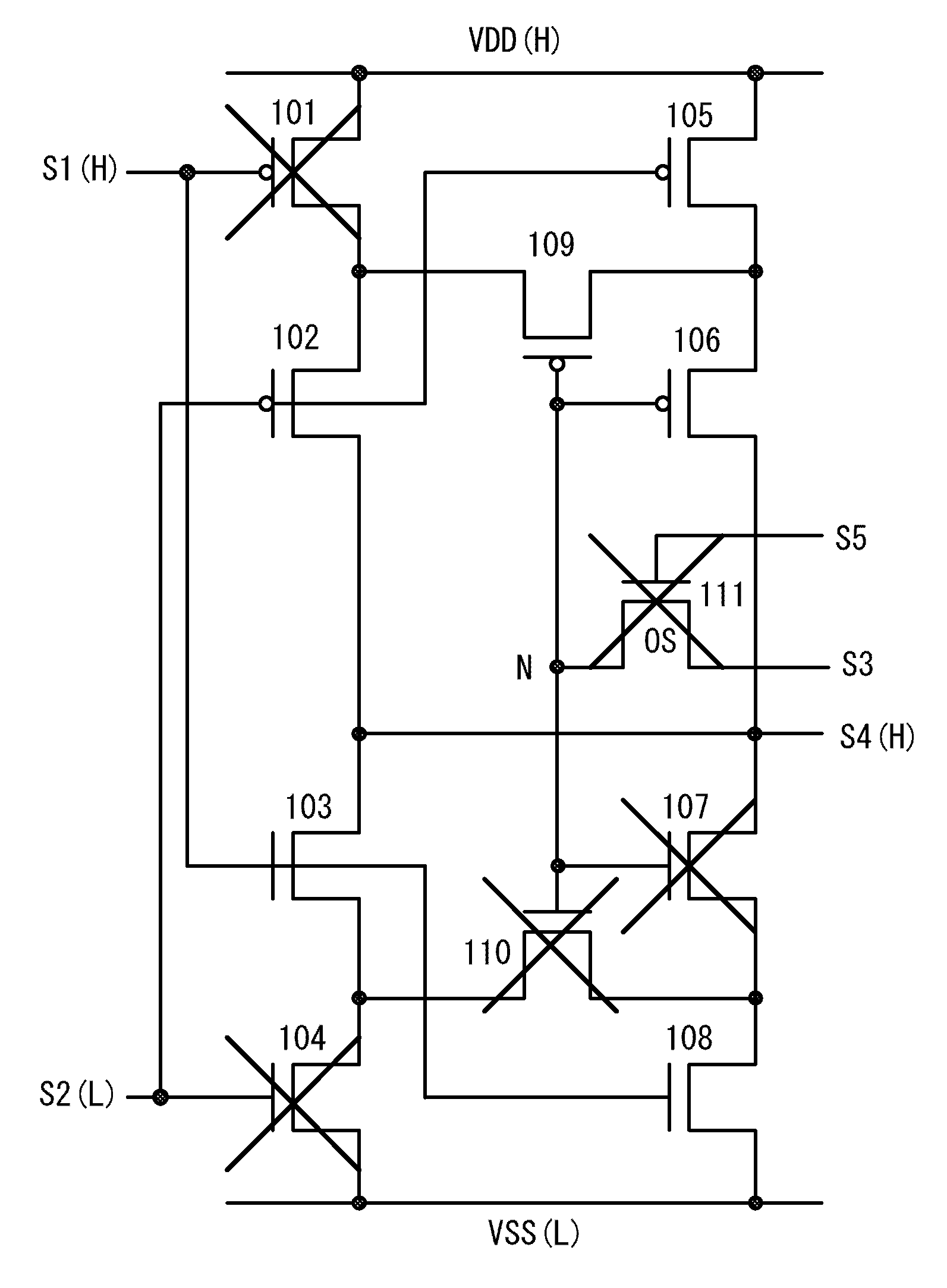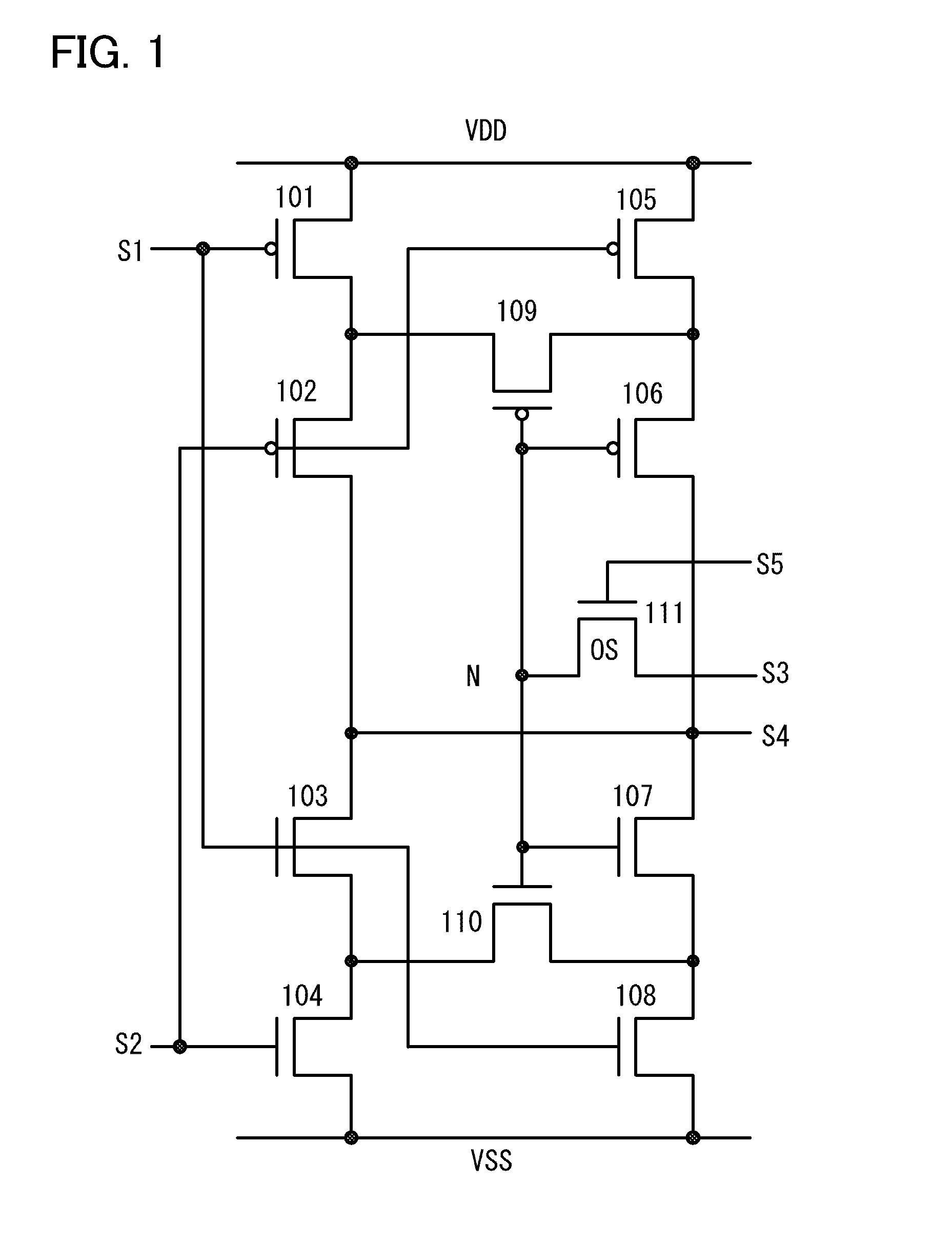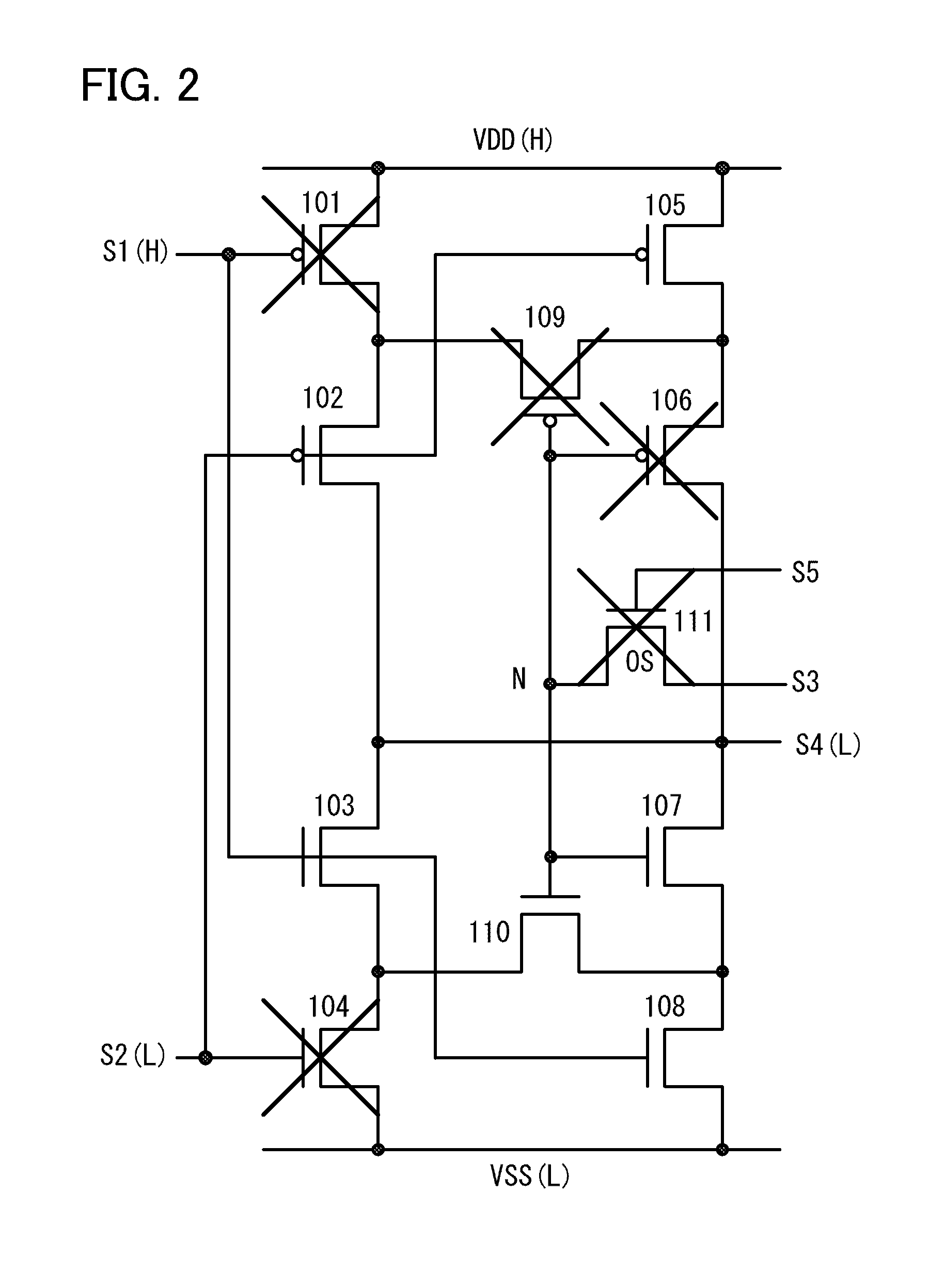Logic circuit
a logic circuit and circuit technology, applied in the field of logic circuits, can solve the problems of high potential, long delay time, loss of configuration data stored in the memory portion, etc., and achieve the effects of short start-up time of logic blocks, reduced power consumption, and small amount of off-state current of transistors
- Summary
- Abstract
- Description
- Claims
- Application Information
AI Technical Summary
Benefits of technology
Problems solved by technology
Method used
Image
Examples
embodiment 1
[0050]In this embodiment, a logic circuit capable of switching between a NAND circuit and a NOR circuit according to one embodiment of the present invention will be described with reference to FIG. 1.
[0051]In the logic circuit illustrated in FIG. 1, a first transistor 101, a second transistor 102, a third transistor 103, and a fourth transistor 104 are connected in series. A fifth transistor 105, a sixth transistor 106, a seventh transistor 107, and an eighth transistor 108 are connected in series. One of a source and a drain of the first transistor 101 and one of a source and a drain of the fifth transistor 105 are connected to a high potential power supply line VDD. One of a source and a drain of the fourth transistor 104 and one of a source and a drain of the eighth transistor 108 are connected to a low potential power supply line VSS. A gate of the first transistor 101, a gate of the third transistor 103, and a gate of the eighth transistor 108 are connected to a first signal li...
embodiment 2
[0072]In this embodiment, a method for manufacturing the transistors of the logic circuit in Embodiment 1 will be described with reference to FIGS. 4A to 4D, FIGS. 5A and 5B, FIGS. 6A to 6C, and FIGS. 7A and 7B. A method for manufacturing the transistor 111, the transistor 107, and the transistor 106 of the logic circuit illustrated in FIG. 1 will be described as an example. Note that in FIGS. 4A to 4D, FIGS. 5A and 5B, FIGS. 6A to 6C, and FIGS. 7A and 7B, a cross-sectional view taken along line A-B corresponds to a cross-sectional view of a region where the transistor 111 including an oxide semiconductor film, the n-channel transistor 107, and the p-channel transistor 106 are formed and where the transistor 111 is stacked over the n-channel transistor 107 and the p-channel transistor 106, and a cross-sectional view taken along line C-D corresponds to a cross-sectional view of the node N at which the one of the source electrode and the drain electrode of the transistor 111 including...
embodiment 3
[0215]In this embodiment, the field-effect mobility of the transistor including an oxide semiconductor film, which is described in the above embodiments, is theoretically calculated, and the transistor characteristics are calculated from the field-effect mobility.
[0216]The actually measured field-effect mobility of an insulated gate transistor can be lower than its ideal mobility because of a variety of reasons; this phenomenon occurs not only in the case of using an oxide semiconductor. One of the causes for the lower mobility is a defect inside a semiconductor or a defect at an interface between the semiconductor and an insulating film. When a Levinson model is used, the field-effect mobility on the assumption that no defect exists inside the semiconductor can be calculated theoretically.
[0217]Assuming that the ideal mobility and the measured field-effect mobility of a semiconductor are μ0 and μ, respectively, and a potential barrier (such as a grain boundary) exists in the semico...
PUM
 Login to View More
Login to View More Abstract
Description
Claims
Application Information
 Login to View More
Login to View More - R&D
- Intellectual Property
- Life Sciences
- Materials
- Tech Scout
- Unparalleled Data Quality
- Higher Quality Content
- 60% Fewer Hallucinations
Browse by: Latest US Patents, China's latest patents, Technical Efficacy Thesaurus, Application Domain, Technology Topic, Popular Technical Reports.
© 2025 PatSnap. All rights reserved.Legal|Privacy policy|Modern Slavery Act Transparency Statement|Sitemap|About US| Contact US: help@patsnap.com



